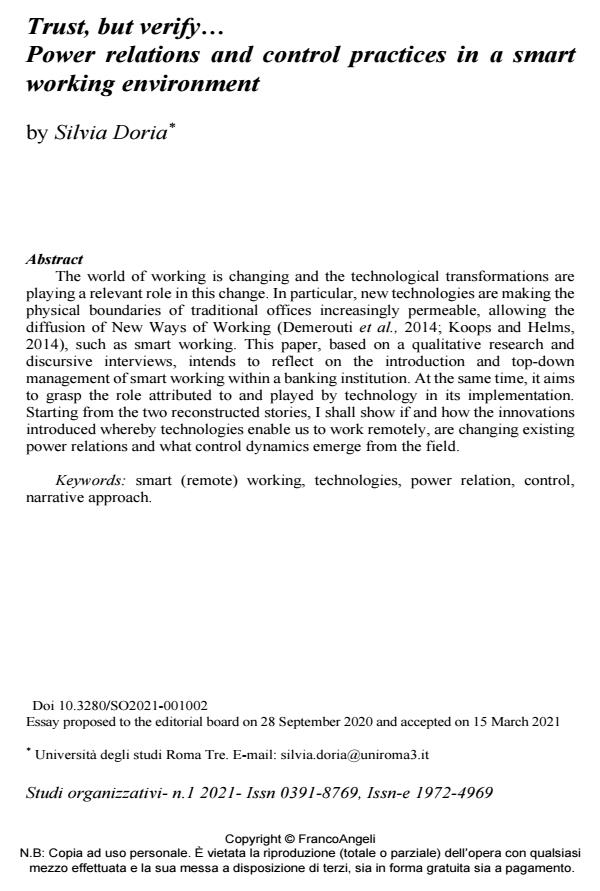Trust, but verify.. Power relations and control practices in a smart working environment
Journal title STUDI ORGANIZZATIVI
Author/s Silvia Doria
Publishing Year 2021 Issue 2021/1
Language English Pages 24 P. 24-50 File size 268 KB
DOI 10.3280/SO2021-001002
DOI is like a bar code for intellectual property: to have more infomation
click here
Below, you can see the article first page
If you want to buy this article in PDF format, you can do it, following the instructions to buy download credits

FrancoAngeli is member of Publishers International Linking Association, Inc (PILA), a not-for-profit association which run the CrossRef service enabling links to and from online scholarly content.
The world of working is changing and the technological transformations are playing a relevant role in this change. In particular, new technologies are making the physical boundaries of traditional offices increasingly permeable, allowing the diffusion of New Ways of Working (Demerouti et al., 2014; Koops and Helms, 2014), such as smart working. This paper, based on a qualitative research and discursive interviews, intends to reflect on the introduction and top-down management of smart working within a banking institution. At the same time, it aims to grasp the role attributed to and played by technology in its implementation. Starting from the two reconstructed stories, I shall show if and how the innovations introduced whereby technologies enable us to work remotely, are changing existing power relations and what control dynamics emerge from the field.
Keywords: Smart (remote) working, technologies, power relation, control, narrative approach.
Silvia Doria, Trust, but verify.. Power relations and control practices in a smart working environment in "STUDI ORGANIZZATIVI " 1/2021, pp 24-50, DOI: 10.3280/SO2021-001002